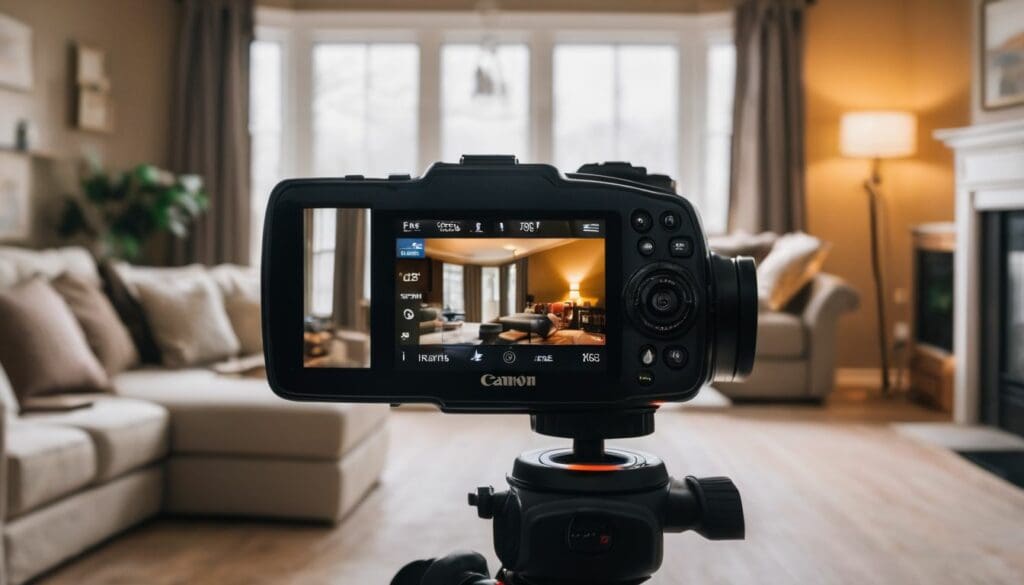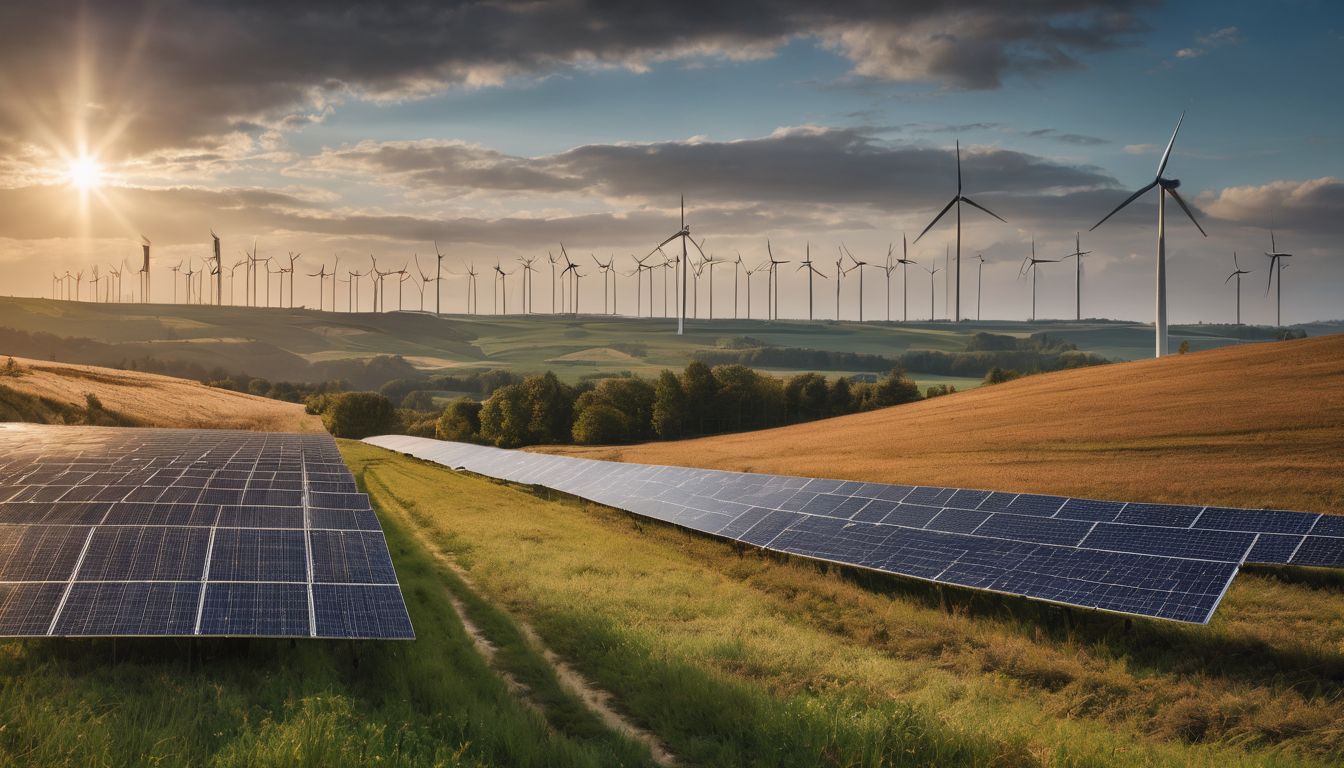Are your energy bills creeping up, leaving you puzzled and out of pocket? A typical household can save about 30% on its energy bill with proper efficiency measures. This guide will show you how to perform a DIY home energy audit, helping you pinpoint and fix those costly draughts.
Get ready to slash those bills!
Key Takeaways
- Begin your DIY home energy audit by examining utility bills and using a home energy monitor for real-time consumption data.
- Check the efficiency of appliances like furnaces, AC units, and water heaters; look for wear and replace dirty filters.
- Inspect your home’s insulation in attics, walls, and floors to assess its condition and thickness against recommended levels.
- Switch to LED or CFL bulbs for lighting, unplug devices not in use to combat phantom electronics’ standby power usage.
- Sealing air leaks around windows, doors, and outlets with weather stripping or caulk can greatly improve energy conservation.
What is a DIY Home Energy Audit?
A DIY Home Energy Audit involves examining your own home to find where you might be losing energy. The goal is simple: pinpoint problem areas that sap your home’s efficiency and raise your electric bill.
You’ll look at how much energy you use, identify leaks or drafts, and check the condition of appliances and heating systems. It doesn’t require special training; instead, it demands attention to detail as you comb through each room with a checklist.
During this type of audit, homeowners take on the role of an investigator searching for clues that lead to wasted energy. Inspecting insulation in walls and attics ensures they adequately prevent heat loss while scrutinising windows for drafts can uncover quick fixes like sealing gaps or adding weatherstripping.
By conducting a DIY energy audit, individuals who value green living engage directly with their household’s contribution to their carbon footprint and unearth practical ways to conserve energy – all starting with steps they can implement right away.
The Benefits of Conducting Your Own Energy Audit
Conducting your own energy audit offers various benefits, including cost savings, increased comfort, and reduced environmental impact. By analysing your energy consumption and identifying areas of inefficiency, you can take targeted steps to lower utility bills and improve the overall comfort of your home.
Additionally, conducting a DIY energy audit allows you to gain valuable insights into how you use energy in your household and identify opportunities for making sustainable changes that benefit both the environment and your pocket.
Moreover, performing a home energy assessment empowers you with knowledge about where potential energy leaks exist in your house. This knowledge enables you to prioritise upgrades or changes that will have the most significant impact on reducing energy waste.
Ultimately, by taking charge of your home’s energy efficiency through a DIY audit, you can make informed decisions that lead to tangible improvements in both resource conservation and financial savings without relying on professional assistance.
How to Conduct a DIY Home Energy Audit
Analyse your energy consumption, inspect furnace, AC, and water heater, check insulation, audit lights and appliances, identify phantom electronics, and check for air leaks to make your home more energy efficient.
Read on to learn how to conduct a DIY home energy audit in order to save money on your utility bills.
Analyse your energy consumption
Assess your utility bills to track your energy usage and identify trends. Consider using a home energy monitor for real-time feedback on electricity consumption. Look for fluctuations in usage during different seasons, and analyse how your daily habits impact energy consumption.
- Monitor the usage of heating and cooling systems to identify patterns in energy consumption.
- Keep track of major appliances such as refrigerators, washing machines, and dryers to understand their contribution to overall energy use.
- Take note of the lighting systems and evaluate the impact of different types of bulbs on energy consumption.
- Assess electronic devices and their standby power usage to identify potential areas for improvement.
- Review the behaviour patterns of household members regarding lights, electronics, heating, and cooling systems to pinpoint opportunities for increased efficiency.
- Use an online energy calculator to estimate your household’s carbon footprint and understand the environmental impact of your energy consumption.
Inspect furnace, AC, and water heater
- Make sure the thermostat settings are appropriate for the season. Lower the setting in winter and increase it in summer to reduce energy consumption.
- Check for any strange noises or odours coming from the appliances, as these could indicate potential issues that need attention.
- Inspect the ductwork for leaks or damage. Seal any leaks with appropriate materials to prevent energy loss.
- If possible, consider upgrading to energy-efficient models for long-term savings on your utility bills.
- Consider insulating hot water pipes to minimise heat loss and reduce energy usage.
- Evaluate whether programmable thermostats could help you manage and optimise your energy usage more effectively.
Check insulation
To ensure energy efficiency in your home, checking insulation is crucial. Here’s how you can do it:
- Inspect the condition of existing insulation in your attic, walls, and floors.
- Look for any signs of damage or wear and tear on the insulation material.
- Measure the thickness of the current insulation to see if it meets recommended levels.
- Consider adding more insulation to areas that are lacking or where heat loss is noticeable.
- Use a thermal leak detector or infrared camera to identify any areas where insulation may be inadequate.
Audit lights and appliances
Assess all lighting and appliances in your home to identify energy-efficient options. Replace incandescent bulbs with LED or CFL equivalents for better energy savings.
- Regularly inspect and clean light fixtures to ensure they are working optimally.
- Unplug chargers and small appliances when not in use to reduce standby power consumption.
- Upgrade old appliances to Energy Star certified models to minimise energy usage.
- Implement smart plugs or power strips to conveniently turn off multiple electronics when not in use.
Identify phantom electronics
- Unplug chargers and devices not in use to prevent standby power consumption.
- Use advanced power strips to cut off power to electronics when not in use.
- Replace old appliances with Energy Star certified models that consume less standby power.
- Utilise smart plugs and timers to control the power supply of electronic devices as needed.
- Invest in energy monitoring systems to track electricity usage of all household electronics.
Check for air leaks
To continue making your home more energy-efficient, it’s important to address air leaks that can lead to unnecessary energy consumption and higher utility bills. Start by inspecting windows, doors, and electrical outlets for any gaps or cracks where air may be escaping. Here are some additional steps you can take to locate and seal air leaks:
- Use a lit incense stick to detect drafts around windows and doors.
- Apply weather stripping to seal gaps around windows and doors.
- Inspect electrical outlets for drafts and install foam gaskets if needed.
- Seal gaps in exterior walls with caulk or expanding foam.
- Check for air leaks in the attic and basement, especially near pipes and vents.
Tips for Making Your Home More Energy Efficient
– Shut down phantom electronics when not in use to save energy and reduce your utility bills. Regularly replacing air filters can also improve the efficiency of your HVAC system.
– Making simple lighting changes and sealing air leaks are easy ways to make your home more energy efficient. Consider community solar as an alternative source of clean energy.
Shut down phantom electronics
To make your home more energy-efficient, remember to shut down phantom electronics when not in use. Phantom electronics like chargers, TVs, and computers continue to consume power even when turned off.
Unplugging or using power strips with an on/off switch can prevent this unnecessary energy drain, reducing your utility bills and environmental impact.
Identifying and shutting down phantom electronics is a simple yet effective way to save energy at home. Make it a habit to unplug devices or turn off power strips when they are not in use to contribute to a greener and more sustainable environment.
Regularly replace air filters
To maintain a more energy-efficient home, make sure to regularly replace air filters. This small but significant task helps your heating and cooling systems run more efficiently, reducing energy consumption and costs.
By staying on top of this simple maintenance, you improve indoor air quality and contribute to a healthier environment for yourself and those around you.
Ensuring that your air filters are changed regularly will also extend the lifespan of your HVAC system. Consider setting up a schedule or reminder to swap out the filters every month or two, especially during peak usage times such as summer and winter months.
Make lighting changes
Lighting changes can significantly impact your home’s energy efficiency. Switching to LED bulbs, using motion-sensor lights, and installing dimmer switches are simple yet effective ways to reduce energy consumption.
Consider maximising natural light during the day and turning off unnecessary lights to further conserve energy. Plus, don’t forget about outdoor lighting – consider solar-powered options for pathways and garden illumination.
When it comes to making lighting changes, every small adjustment plays a part in reducing your carbon footprint and utility bills. By taking these steps, you contribute to a more sustainable environment while creating a brighter future for generations to come.
Seal air leaks
Sealing air leaks can be a simple and effective way to improve your home’s energy efficiency. Identify and seal any cracks or gaps around windows, doors, pipes, and electrical outlets.
Use weather stripping or caulk to seal these areas effectively. By doing so, you can prevent warm air from escaping in the winter and keep cool air inside during the summer, reducing the strain on your heating and cooling systems.
Taking care of these air leaks not only helps lower your energy bills but also minimises your home’s carbon footprint. Plus, it creates a more comfortable living environment by maintaining consistent indoor temperatures throughout the seasons.
After sealing air leaks, consider other energy-efficient improvements such as upgrading insulation or installing smart thermostats to further enhance your home’s overall energy performance.
Consider community solar
When considering ways to make your home more energy efficient, community solar is an excellent option. By participating in a community solar project, you can access clean and renewable energy without the need for roof panels or a large upfront investment.
Community solar programs allow individuals to subscribe to a shared solar array and receive credits on their electricity bills for the power produced. This not only reduces your carbon footprint but also provides potential cost savings on your utility bills.
To get started with community solar, simply research local programs or contact your utility provider to inquire about available options. Embracing community solar is a proactive step towards supporting environmental conservation while enjoying the benefits of sustainable energy.
Conclusion
In conclusion, a DIY home energy audit can help you identify areas where energy is being wasted. By analysing your energy consumption and inspecting key areas like the furnace, AC, and insulation, you can make informed decisions to improve efficiency.
Simple tips such as shutting down phantom electronics and sealing air leaks can lead to significant energy savings in the long run. Take charge of your home’s energy usage and contribute to a more sustainable future.
FAQs
1. What is a DIY home energy audit?
A DIY home energy audit is when homeowners use simple assessment tools and checklists to find ways they can save energy at home.
2. How do I start performing a DIY energy efficiency audit?
Begin your DIY energy efficiency audit by inspecting insulation, analysing utility bills, and checking for draughts with an infrared camera or other detection tools.
3. Can conducting a home energy audit really lower my bills?
Yes! Conducting a home energy audit helps you identify where to improve your home’s energy conservation, which can reduce your monthly utility costs.
4. Are there any specific tips for saving energy during my DIY inspection?
While performing your DIY home inspection, look out for areas that need better insulation and consider the use of space heaters instead of central heating in rarely used rooms as top tips.
5. Should I ever opt for a professional energy audit over doing it myself?
Although a DIY project can be effective, sometimes hiring experts with specialised equipment like an infrared camera can uncover more complex issues best handled by professionals.





